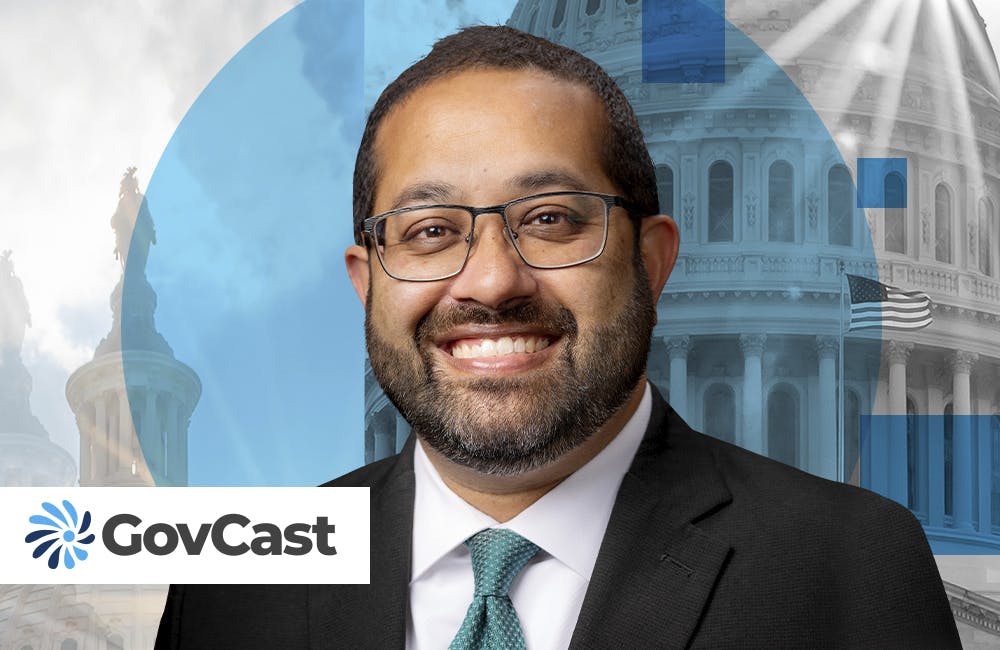Agencies Look to Digital Tools, AI to Improve Mental Health Care
With an uptick of mental health disorders during the pandemic, officials are scaling up tech to meet demand for care.

COVID-19 has caused shutdowns and isolation, increasing mental health distress for many Americans and making it difficult to access in-person treatment for mental health disorders. Many providers and health care professionals are turning to digital treatments and resources to help Americans struggling amid the pandemic.
The Substance Abuse and Mental Health Services Administration has collected data from 2020, indicating a substantial increase in mental health disorders among Americans this year. CDC data has shown that up to half of all Americans have experienced “significant mental health disorders” this year, noted SAMHSA Director of Management Technology and Operations Paolo del Vecchio during Thursday’s GovernmentCIO Media & Research Digital Health Modernization event.
“We’ve seen reports of increased substance abuse at the same time,” del Vecchio added. “We’re seeing concerns about increases in the rates of deaths by suicide, as well as overdoses. So issues of anxiety, depression are ones that many Americans are experiencing — certainly social isolation, which is a significant factor that’s contributing to that.”
Mental health care providers have been trying to scale up digital care and telemedicine amid the increasing mental health distress across the country. Del Vecchio said that before COVID-19, data showed that only about 2% of all mental health treatment was provided online, and now 80% of providers are conducting a “majority of their services online.”
Defense health beneficiaries who have also struggled with mental health have also increasingly accessed virtual care throughout this year. Defense Health Agency Connected Health Director Dr. Simon Pincus reported that 5 to 10% of treatment visits were conducted via telehealth before the pandemic. But since March, telehealth use across the military health system has increased to 80% of visits.
While DHA has been seeing an increase in telehealth visits, Connected Health has also been scaling up its mobile and web applications to help military health beneficiaries and providers manage and cope with mental health distress amid the pandemic.
“We noticed that providers were under a lot of stress because they’re also subject, in very similar ways, to the same things that our patients are subject to, in terms of the threat of COVID-19. So we created a provider resiliency toolkit, which is a mobile application, and it’s a suite of tools that allows for providers to do things like meditation or breathing and similar kinds of things,” Pincus said. “We saw a 350% increase in the use of that particular tool by providers in the beginning.”
Pincus explained that Connected Health derived many of the concepts for the provider resiliency toolkit from the agency’s pre-existing mobile app for defense health patients called the Virtual Hope Box. This app aims to help manage stress, has breathing and coping exercises and enables users to create a response plan if they are at risk for suicide.
SAMHSA has also made some strides in supporting suicide prevention in recent months. One of the biggest efforts, del Vecchio explained, has been in working with the Federal Communications Commission to establish a three-digit national suicide prevention hotline at the phone number “988.” Not only does 988 connect to the National Suicide Prevention Lifeline, but also to the Veterans Crisis Line for veterans and service members who are seeking assistance.
The Wounded Warrior Project, a non-profit organization that helps veterans and service members with physical and mental wellness, has also pivoted to technological solutions to further aid veterans and military members by partnering with organizations with online resources and mental health care and supporting the 988 suicide hotline number.
The organization has been a proponent of telemedicine support in the Commander John Scott Hannon Veterans Mental Health Care Improvement Act, a bill that looks to update VA transition assistance, mental health care and technological resources to meet those care needs.
“This was a bill, quite frankly, that helios increase existing VA mental health programming,” noted the organization’s Vice President of Government and Community Relations Jose Ramos. “Additionally, it really does focus on growing and becoming more comfortable with telehealth care and increasing accessibility through more convenient locations.”
While civilian, defense and veterans health IT officials have scaled up many digital mental health resources amid COVID-19, they are also looking toward the future of care with artificial intelligence applications to advance predictive analytics in preemptively identifying people at risk for suicide and other mental health complications.
DHA Connected Health, for instance, has a behavioral health data portal where patients can fill out depression, post-traumatic stress disorder (PTSD) and anxiety scales for providers to review. Pincus said that DHA is able to build significant datasets with that patient input to assemble predictive analytics that can both point to population-sized trends in mental health and assist individual patients with data-driven care suggestions.
Recently, the VA’s PREVENTS program to mitigate veteran and general suicide has also incorporated AI and predictive analytics in its roadmap. With the VA’s and Defense Department’s common electronic health record, it has been increasingly easier to track individuals from their time in and after active duty and apply predictive analytics to earlier identify those at risk for suicide.
“The intent here is to develop a health record that will follow a service member into transitioning into the veteran population, and the ability to include AI or predictive analytics within the service records, I think, are crucial and identify those at risk during transition because we obviously see a high risk of suicide in transition, particularly in the first year of transition,” Ramos said.
While defense and veterans health officials are looking to apply AI in suicide prevention, del Vecchio said that there are many more use cases for mental health providers and patients to look forward to in advancing discoveries, prevention and care.
“Exploiting the kind of AI that’s being applied in mental health — digital phenotyping to machine learning, natural language processing, is very promising,” del Vecchio said. “Also, we have to have concerns too, though — ethical issues.”
This is a carousel with manually rotating slides. Use Next and Previous buttons to navigate or jump to a slide with the slide dots
-

DOD Has a New Cyber Resiliency Assessment Program
Defense officials tout the continuous assessment feature and scalability of the new program amid increased cyber threats.
5m read -

Transitioning Systems for Modern Agency Missions
IT modernization is a constant process necessary for improving customer service, mission delivery and collaboration.
40m watch -

Cyber Resilience and Recovery Amid Evolving Cyber Threats
Data durability is a key aspect of NIST’s cybersecurity framework for public and private organizations.
21m listen -

How Tech Enables Environmental Justice at EPA
The agency wants to eliminate bias and establish new tech standards to reduce greenhouse gas emissions.
39m listen








